This is the next in a series of articles in which people involved with the Rye Castle Museum choose an object from the collection which represents an aspect of the history of the town, and its environs, and tell us what it means to them.
The Mary Stanford lifeboat model and display
For the people of Rye Harbour and Rye, few events of the last 100 years have been as devastating and emotional as the tragic loss of the RNLI lifeboat, the Mary Stanford and its 17 crew, on the early morning of November 15, 1928 – a tragedy etched into the collective memory of local inhabitants ever since.
The story of this event, the biggest loss of life from a single lifeboat in the history of the RNLI, is covered in a display at 3 East Street, with a model of the similar type of lifeboat as the Mary Stanford in Ypres Tower and has been chosen by museum trustee, Geoffrey Mead:
“As a museum trustee I have chosen the Mary Stanford exhibition as my ‘object of choice’. Many years ago, at a meeting of the Historical Association in Brighton, we had a role play evening using the transcript of the Mary Stanford enquiry, I was playing a Rye police sergeant. Since then, I have had an interest in the Mary Stanford, as although I live in Brighton, Rye Harbour is a favourite spot and a location I have used in my university teaching when looking at coastal communities and industrial landscapes. So, anything linked to Rye Harbour has my interest, and who could not be moved by the sheer heroism of the lifeboatmen on that stormy November night. If you watch ‘Saving Lives at Sea’ on TV then consider how difficult is was for those lifeboatmen in the days of rowing lifeboats, with no radio and defective life preservers. It always brings a lump to my throat when I recount the tale of the Mary Stanford.”
As a further reminder of the disaster, the haunting and iconic Mary Stanford lifeboat house stands alone on the shingle shoreline of Rye Harbour Nature Reserve, a sight that can be seen from many vantage points around – from Cliff End, Pett Level and Winchelsea.

The lifeboat house (a grade 2 listed building) was constructed in 1882 and is a rare example of pre-cast shingle “no fines” concrete, and possibly the only lifeboat house made of this material still in existence. It was built by a local builder, Mr A Anne funded by £255 of donations from RNLI and is considered an important example of early 19th century charitable and altruistic activity. It was first called Winchelsea lifeboat station as there was already one at Rye Harbour. This was demolished in 1901 and the Winchelsea station was renamed Rye Harbour lifeboat station as it was crewed and launched by residents of Rye Harbour.
In 1914, Rye Harbour had a self-righting 10-oar-pulling and sailing Liverpool class boat called the John William Dudley. As it had been in service since 1900, the RNLI offered a new lifeboat and, with the crew’s agreement, a non-self-righting Liverpool class 14-oar and sailing boat was chosen as it was considered easier to launch on a flat beach and lighter for the crew to pull across the shingle to sea.
Built by SE Saunders of East Cowes, the Isle of Wight, the new lifeboat arrived at Rye Harbour in October 1916 and was named Mary Stanford in memory of the woman who left the cost of the boat in her legacy.
On arrival at Rye Harbour the vessel was tested in difficult weather conditions and deemed suitable as reported in the Board of Trade Inquiry to the disaster, held in 1929: “She proved herself to be a good sea boat upon all occasions, several of the services having been rendered under weather conditions similar to those prevailing at the time of the disaster. The crew at no time expressed dissatisfaction with the boat; on the contrary, all recorded remarks were highly favourable.”

The boat had no engine, no radio and, as the boat needed to be rowed, the crew required physical strength as well as a good level of seamanship. It was launched 63 times, (47 in practise and 16 times in active service) and saved 10 lives. The crew was made up of volunteers from the village many of whom were fishermen and were friends or related.
The lifeboat disaster
On the night of the disaster, the weather was extremely stormy with gales of up to 80mph, heavy rain and huge waves. Just after 4am a small steamer Alice of Riga, loaded with bricks, was in collision with a German ship Smyrna. The Alice of Riga lost her rudder and had a hole torn in her side and was drifting eight miles from Dungeness. Rye Harbour coast guard were informed, and maroons were fired to summon the crew. In the poor conditions it took three attempts to launch the lifeboat. According to the inquiry: “The boat was manned and successfully launched at 6:45am, the wind being SSW, with a force of eight to 10, with a very heavy breaking sea on the beach and rain squalls. At the time it was approximately low water. The boat proceeded out to sea under sail with a double-reefed foresail and mizzen.”
At 6:12am a message from the North Foreland radio station was received by the liaison officer at the Ramsgate Coastguard Station to the effect that the crew of the SS Alice had been saved by the Smyrna. This message was not entitled to priority as a lifesaving message and reached the Rye Coastguard Station at 6:50am but the Mary Stanford had already been launched. Flares were fired to call the lifeboat back, but as it did not return, it was assumed that due to the poor weather, the crew did not see them.
From around 9am, the lifeboat was spotted several times, around Dungeness and then heading back to Rye Harbour and all seemed well but at 10:30am several witnesses saw the Mary Stanford capsize. One such, Harold Ewet Dunster, a lorry driver, was standing on a sand dune near Broomhill, observed the lifeboat, and stated that “…she seemed to turn round to the shore and as she turned round she toppled over … She was on the top of a big wave.”
By 12pm the upturned lifeboat came ashore at Broomhill Sands and it was clear over the following hours that 15 crew members had drowned and that two others were missing.

The seventeen men who lost their lives were Herbert Head (47) coxwain, and two sons James Alfred (19) and John Stanley (17); Joseph Stonham (43), 2nd Coxswain; Henry Cutting (39), Bowman and his two brothers Roberts Redvers (28) and Albert Ernest (26); Charles Frederick David (28), Robert Henry (23) and Lewis Alexander (21) Pope, three brothers; William Thomas Albert (27) and Leslie George (24) Clark, brothers; Arthur George (25) and Maurice James (23) Downey, cousins; Albert Ernest Smith (44), Walter Igglesden (37) and Charles Southerden (22).
The aftermath
An inquest was held in Rye Town Hall the following day and a verdict of death by accident was recorded by the coroner. The inquest raised some doubts about the effectiveness of the life jackets and the RNLI asked the Board of Trade to undertake a full inquiry into the disaster.
The Board of Trade court of inquiry sat at Rye Town Hall on December 19, 20 and 21, 1928 and the following January 1, 2 and 4, 1929. After their deliberation the court announced:
“As there were no survivors of the crew, the cause of the Lifeboat capsizing is a matter of conjecture, but from the evidence available we are of the opinion that whilst attempting to make the harbour on a strong flood tide and in high and dangerous breaking sea, she was suddenly capsized and the crew were thrown into the water, two men being entangled under the boat. The broken water and heavy surf caused the loss of the crew.”

The funeral of 15 members of the crew, buried in a communal grave, was held on November 20 at Rye Harbour and attended by hundreds of people. The body of Henry Cutting was found at Eastbourne three months later, and was bought back home and interred with his fellow crew members at the Church of the Holy Spirit. John Head’s body was never recovered.
After the disaster, the lifeboat station was decommissioned by the RNLI and the Mary Stanford lifeboat was taken to the RNLI depot in Poplar and broken up.

The crew are honoured through a memorial of painted pebbles at the present day Rye Harbour RNLI lifeboat station and through an annual remembrance service every November 17. In memory of the men’s sacrifice, a window in the church at Winchelsea shows a lifeboat launching to a ship in distress and names the 17 members of the crew.
The Mary Stanford disaster commemorated
The tragedy is remembered through a 1998 folk song written by Meet on the Ledge called Mary Stanford of Rye.
Monica Edwards wrote a book, Storm Ahead published in 1953, a fictionalised account. Her father, Reverend Harry Newton was the vicar of Rye Harbour at the time and took the funeral of the crew members. She was a close friend of Charlie Southerden who was one of the dead.
Actor and writer, Adrian Wheeler, is researching and writing an emotive drama about a community coming to terms with the disaster in Rye Harbour: The Sea will have its Own
The Friends of The Mary Stanford Lifeboat House are working to save it from further decline and the campaign to raise a substantial sum is being relaunched with a just giving page and a fundraiser at the William the Conqueror pub, Rye Harbour on May 21 (details to be announced). An update on this campaign will appear in Rye News at a later date.
Rye Castle Museum opening times
Rye Castle Museum has two sites, one is the Castle / Ypres Tower and the other in a former bottling factory at 3 East Street, which houses many of our local history exhibits.
Castle / Ypres Tower is open daily throughout the year. March 30 to October 31 from 10:30am to 5pm. November 1 to March 29 from 10:30am to 3:30pm.
East Street is open at weekends from April to October from 10:30am to 4:30pm (subject to availability of volunteers).
Image Credits: Juliet Duff / Rye Castle Museum , Juliet Duff , RNLI /Rye Harbour.net , Juliet Duff/Rye Castle Museum .



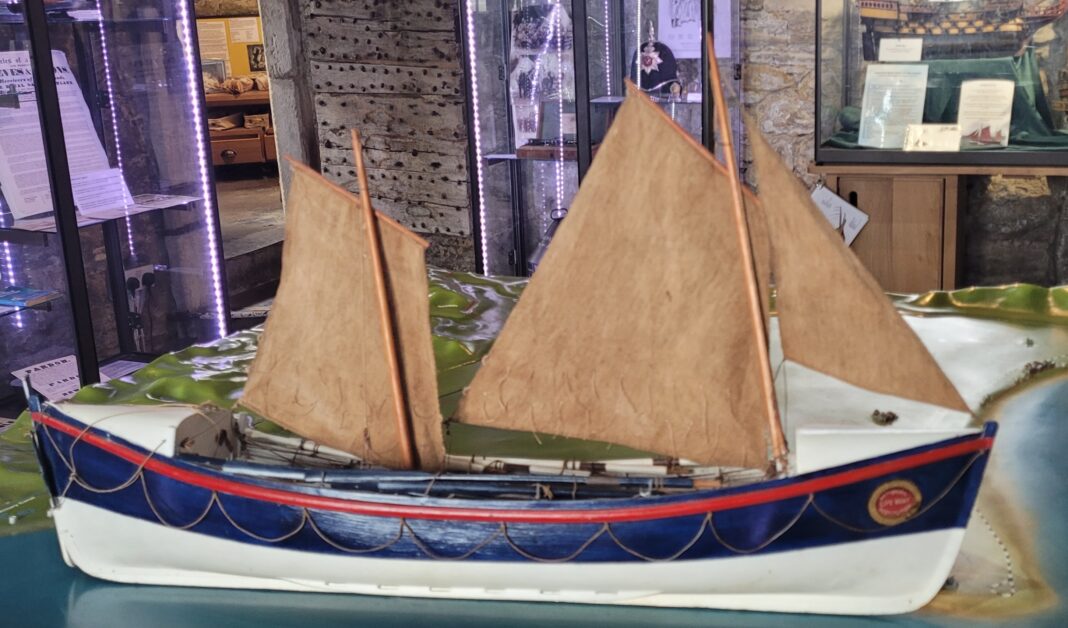
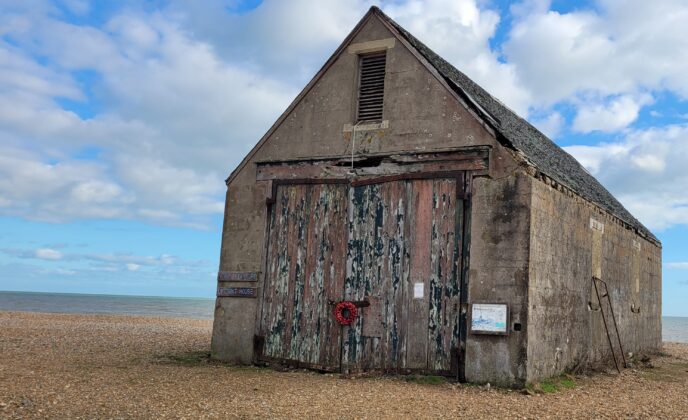
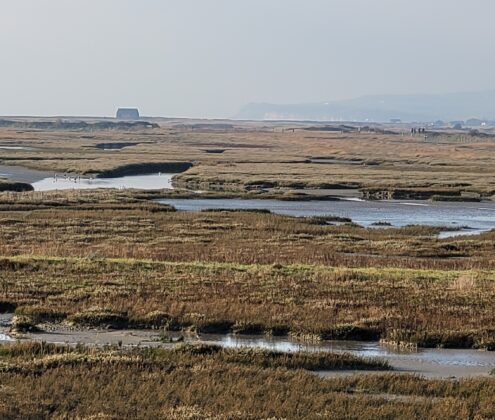
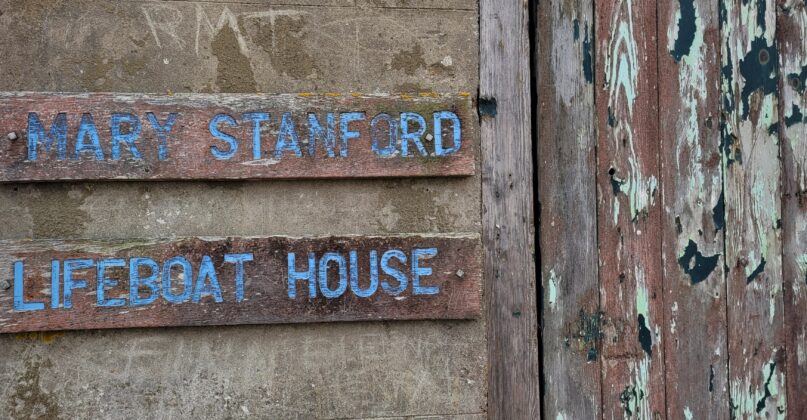
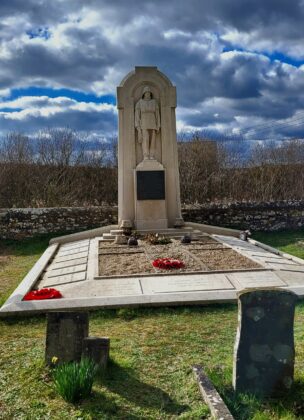
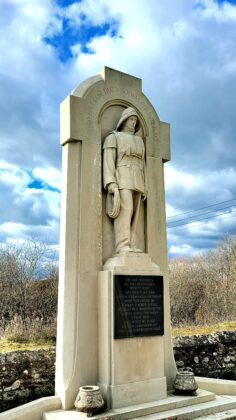
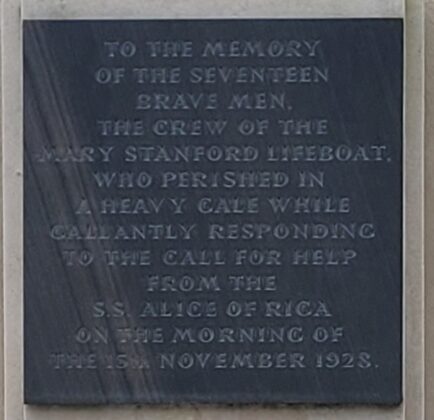
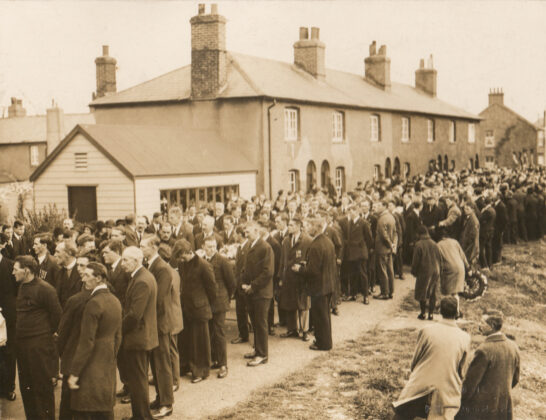

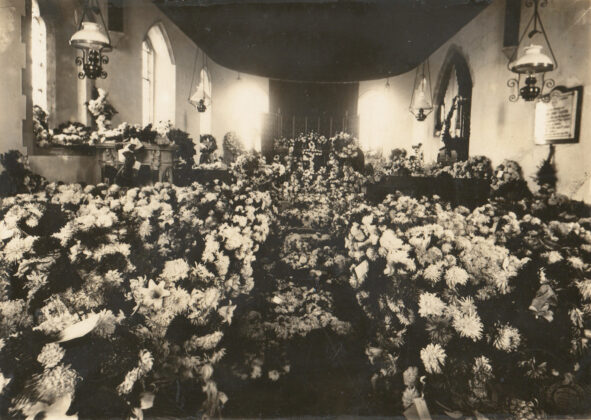
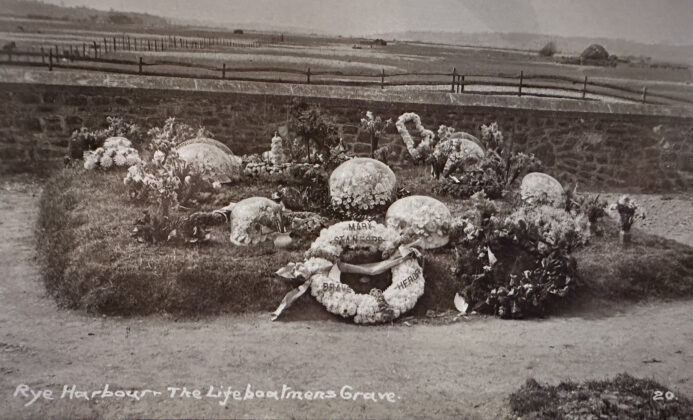
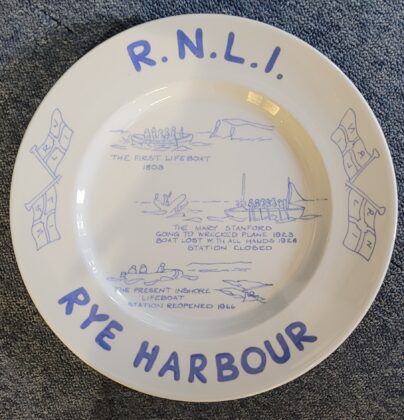
Many years ago, probably the late fifties or early sixties, BBC radio broadcast an interesting programme about the disaster on what was then the Home Service or the Third Programme. I can’t be sure as it was a long time ago, but think it was in the form of a radio drama. It was the first that I had heard of it and have since been rather taken by the surnames of the men who died. There were several recognisable Rye names, some of which were borne by my school cohorts of the fifties and sixties, probably their uncles or grandparents.
[RN note: Could not find BBC documentary but this short clip from British Pathé. https://cutt.ly/n4TxE14 ]
Moving as ever… Great article and great photos. Interestingly, next to the picture of the recovered Mary Sandford is a Vickers MkII tank. Assume it’d been used to draw the boat up the beach?
Why is the Mary Stanford lifeboat house being left to the elements, is there any reason why it can’t be made a better looking memorial to the crew that lost their lives!!
A charity exists with the aim of preservation but wheels turn slowly !!!!
There is a Friends of Mary Stanford Lifeboat House charity (mentioned at the end of the article) which is about to relaunch its fundraising campaign. There will be an article updating people about the plans of the charity, by the chair, Jacqueline Stanford, in Rye News very soon.
I asked Richard Farhall, Rye Town Clerk, for contact re the Mary Stanford hut as I would like to help in some form or another to restore it. I tried several years ago to get people interested. Having lived in the harbour I was quite affected by the disaster.
I responded to the contact Richard sent me, a week ago, and have heard nothing so far. If anyone knows people I could contact I would be grateful for info.
Heidi Foster
The Friends of the Mary Stanford Lifeboat House are relaunching the fundraising campaign with an event at the William the Conqueror on May 21. An article on the campaign will be in Rye New soon.
I am surprised that in your section about the ‘disaster commemorated’ you make no mention of the lovely Mary Stanford shanty written by Martin Bruce and sung by him and the Harbour shanty singers each year at the church service remembering the heroic crewmen. The song by Meet on the Ledge has, I have heard, upset the Head family because it calls John Stanley ‘Johnny’ and he was never known as that by anyone at the time.
I am very pleased to have read this article because my grandfather once told me that three of his cousins drowned as crew of the Mary Stanhope, they were the Popes, my great grandmother was born Elizabeth Pope in the parish of Broomhills.
I heard only yesterday that there is a cabinet in the vestry of Rye Church that may have been made by my grandfather as a lasting memorial of that tragedy.
He would then have been living with his mother at her home Wingetts – wrongly named Wingates on some postcards – on Camber Sands.
Grandad was Bertram Edwin Wingett, youngest of the three Wingett sons, he had had to leave his home and family in Carshalton during the unemployment years of the the 1920s to make some sort of income from fishing at Camber. He used horse and cart to stake out a net at high tide and collected caught fish later.
I and a cousin have 3 watercolours of Camber that were painted shortly after